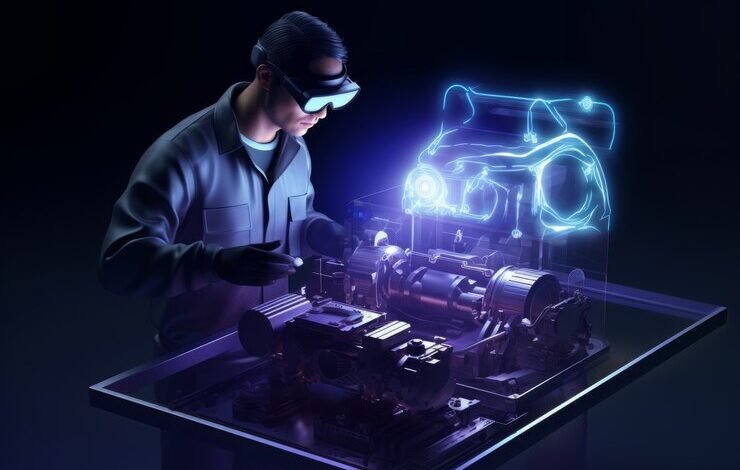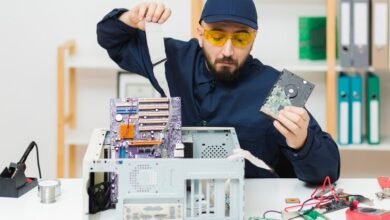Turbocharge Your Performance Mastering Nikke A2 Overclocking

In the world of tech enthusiasts and gamers, the quest for unparalleled performance never ends. Whether you’re a seasoned PC builder or a passionate gamer, the idea of unlocking your system’s full potential is irresistibly appealing. Overclocking is the art of pushing your hardware beyond its factory settings to achieve better performance. Today, we’re going to explore how to overclock your Nikke A2 for superior results. This guide will take you through the essentials, from understanding the intricacies of the Nikke A2 to mastering overclocking techniques safely. Let’s get started.
Introduction to Overclocking
Overclocking is not just a buzzword in the tech community; it’s a powerful tool for enhancing computer performance. By increasing the clock speeds of your CPU, GPU, or RAM, you can achieve significant gains in speed and efficiency. For users of the Nikke A2, overclocking offers the promise of smoother gaming experiences and faster processing power. However, it’s crucial to approach it with a clear understanding of both the benefits and the risks involved. This guide will walk you through the process, ensuring you get the most out of your Nikke A2 without compromising stability.
The allure of overclocking lies in its ability to transform your PC into a high-performance machine. But it’s not just about raw power; it’s also about customization. By tailoring your system to your specific needs, you can optimize your Nikke A2 for gaming, content creation, or any other demanding task. Remember, though, that overclocking requires a balance between ambition and caution. The ultimate goal is to achieve a stable system that runs smoothly under increased loads.
In this article, we’ll cover everything you need to know about overclocking your Nikke A2. From preparation to execution, and from testing to maintenance, we’ll guide you through each step. Whether you’re looking to gain a few extra frames per second in your favorite games or simply want a more responsive system, overclocking can be the key to unlocking your hardware’s potential.
Understanding the Nikke A2
Before diving into the world of overclocking, it’s essential to understand the hardware you’re working with. The Nikke A2 is a versatile machine renowned for its robust components, making it an excellent candidate for overclocking. At its core, the Nikke A2 is powered by a top-tier CPU and a powerful GPU. These components are designed to handle demanding tasks, but with the right tweaks, they can offer even more.
The CPU of the Nikke A2 is a powerhouse, capable of handling multiple tasks simultaneously. Overclocking the CPU can lead to faster processing speeds, allowing for quicker data handling and more efficient multitasking. Meanwhile, the GPU is a graphics beast, ideal for gamers and creators who demand high-quality visuals. By overclocking the GPU, you can enjoy smoother graphics and better performance in graphics-intensive applications.
The RAM in the Nikke A2 is another crucial component. It plays a vital role in determining how quickly your system can access and process data. Overclocking the RAM can lead to noticeable improvements in overall system responsiveness. By boosting the performance of these key components, you can tailor your Nikke A2 to meet your specific needs, whether that’s gaming, content creation, or general productivity.
Preparing for Overclocking
Successful overclocking begins with thorough preparation. Before you start tweaking settings, it’s important to understand the potential risks involved. Overclocking can lead to increased heat output and power consumption, which, if not managed properly, could damage your components. That’s why proper cooling is essential. Ensure your system is equipped with adequate cooling solutions, such as high-quality fans or liquid cooling systems, to dissipate the extra heat generated by overclocking.
Next, consider backing up your data. While overclocking itself is generally safe when done correctly, mistakes can happen. By creating a backup of your critical files and system data, you can protect yourself against any unforeseen issues. Once your data is secure, familiarize yourself with your system’s BIOS or UEFI settings. This is where you’ll make the necessary changes to overclock your hardware.
Finally, equip yourself with the right tools. Software utilities like CPU-Z, HWMonitor, and Prime95 are invaluable for monitoring system performance and stability during the overclocking process. With these preparations in place, you’re ready to begin the exciting process of overclocking your Nikke A2.
How to Overclock Your Nikke A2
Now that you’re prepared, it’s time to begin overclocking your Nikke A2. We’ll guide you through the process step-by-step, focusing on the CPU, GPU, and RAM. First, let’s start with the CPU. Access your system’s BIOS or UEFI interface and locate the CPU multiplier setting. Increase this multiplier incrementally, testing stability after each change. Remember, patience is key. Small adjustments can have a big impact, so take your time.
Next, move on to the GPU. Many GPUs come with dedicated software utilities that allow you to adjust clock speeds and voltages. Use these tools to gradually increase the GPU’s core and memory clock speeds. Always monitor your system’s temperature closely, ensuring it remains within safe limits. If temperatures rise too high, dial back the settings to prevent damage.
Finally, let’s address the RAM. In your BIOS/UEFI, locate the memory settings and look for options related to frequency and timings. By increasing the RAM frequency, you can improve data processing speeds. However, as with the CPU and GPU, make changes gradually and test for stability. Once you’ve achieved a stable overclock, enjoy the fruits of your labor—a faster, more powerful Nikke A2.
Benchmarking and Testing
Benchmarking and testing are crucial steps in the overclocking process. After each change you make, it’s essential to verify that your system remains stable and performs as expected. Use benchmarking tools like Cinebench or 3DMark to evaluate your system’s performance under load. These tests provide valuable insights into how your overclocked components are handling increased demands.
In addition to benchmarking, conduct stability testing using software like Prime95 or FurMark. These programs stress-test your CPU and GPU, respectively, ensuring they can handle the increased workloads without errors or crashes. Keep an eye on temperatures throughout this process, as overheating can lead to instability and potential damage.
By thoroughly testing your overclocked system, you can identify any issues early and make necessary adjustments. This not only ensures the longevity of your components but also guarantees that you’re maximizing the performance benefits of overclocking. Remember, a stable system is a happy system—don’t rush the testing phase.
Overclocking for Specific Use Cases
Different users have different needs, and overclocking can be tailored to suit specific tasks. Gamers, for example, may prioritize GPU performance for smoother frame rates and better graphics quality. Content creators, on the other hand, might focus on CPU and RAM overclocking to expedite rendering times and enhance multitasking capabilities.
For gaming enthusiasts, optimizing the GPU is often the priority. Adjusting the core and memory clock speeds can lead to improved graphics performance, resulting in a more immersive gaming experience. However, it’s important to balance GPU performance with CPU and RAM settings to prevent bottlenecks.
Content creators should focus on achieving a balanced overclock across CPU, GPU, and RAM. Faster CPU and RAM speeds can significantly reduce rendering times and enable seamless multitasking, while a capable GPU ensures smooth video playback and editing. Whatever your use case, tailor your overclocking settings to match your specific needs and goals.
Safety and Maintenance
After successfully overclocking your Nikke A2, ongoing safety and maintenance are essential. Regularly monitor your system’s temperatures using software like HWMonitor. This helps ensure your components remain within safe operating limits, preventing overheating and potential damage.
In addition to temperature monitoring, perform regular system maintenance to keep your Nikke A2 in top condition. Clean dust and debris from fans and heatsinks to maintain optimal airflow. Additionally, keep your system’s drivers and firmware updated to ensure compatibility and performance.
By staying vigilant and proactive, you can enjoy the benefits of overclocking without compromising the longevity of your hardware. Remember, a well-maintained system is key to achieving sustained performance gains.
Conclusion
Overclocking your Nikke A2 is a rewarding endeavor that can unlock significant performance gains. By understanding your hardware, preparing thoroughly, and following a methodical approach, you can safely push your system beyond its factory settings. Whether you’re a gamer seeking higher frame rates or a content creator looking for faster rendering times, overclocking can help you achieve your goals.



